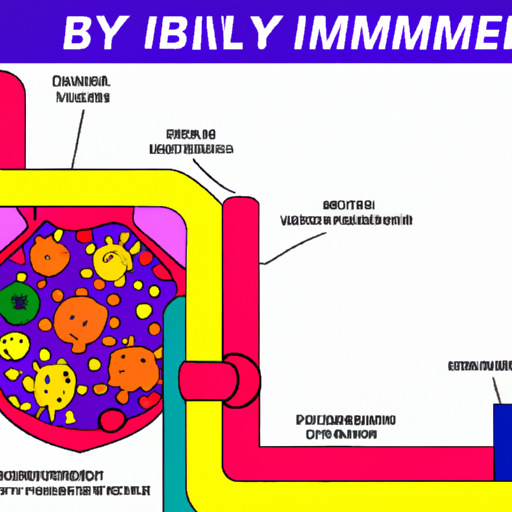Where Does B Lymphocytes Develop Immunocompetence: Unveiling the Mystery
B lymphocytes, also known as B cells, are a crucial component of the immune system responsible for producing antibodies to fight against pathogens. But have you ever wondered where these B lymphocytes develop their immunocompetence? In this article, we will delve into the mystery and uncover the locations where B lymphocytes undergo this vital process.
The Bone Marrow: The Birthplace of B Lymphocytes
The journey of B lymphocytes begins in the bone marrow, a soft tissue found within the hollow spaces of our bones. It is here that hematopoietic stem cells, which have the potential to develop into various blood cells, including B lymphocytes, reside. These stem cells undergo a series of complex differentiation steps to become mature B cells.
During this process, the B lymphocytes acquire unique receptors on their surface called B cell receptors (BCRs). These receptors play a crucial role in recognizing specific antigens, which are molecules found on the surface of pathogens. The development of B lymphocytes in the bone marrow is a tightly regulated process, ensuring that only those cells with functional BCRs proceed further.
The Secondary Lymphoid Organs: Fine-Tuning Immunocompetence
While the bone marrow is where B lymphocytes are born, it is in the secondary lymphoid organs where they undergo further maturation and fine-tuning of their immunocompetence. The primary secondary lymphoid organs include the spleen and lymph nodes, while other organs like the tonsils, adenoids, and Peyer’s patches also contribute to this process.
In these secondary lymphoid organs, B lymphocytes encounter antigens presented by specialized cells called antigen-presenting cells (APCs). When a B lymphocyte recognizes its specific antigen, it undergoes a process known as clonal expansion. This means that the B cell multiplies rapidly, producing a large number of identical cells capable of targeting the same antigen.
During clonal expansion, B lymphocytes undergo further genetic rearrangements to increase the diversity of their BCRs. This process, known as somatic hypermutation, allows B cells to generate a wide range of antibodies with varying affinities for antigens. The B lymphocytes with the highest affinity for the antigen are selected for survival, while those with lower affinity undergo apoptosis.
The Mucosal Immune System: A Specialized Site for B Lymphocyte Development
In addition to the bone marrow and secondary lymphoid organs, the mucosal immune system also plays a vital role in B lymphocyte development. Mucosal tissues, such as the respiratory and gastrointestinal tracts, are constantly exposed to a wide array of pathogens. To combat these pathogens effectively, the mucosal immune system has specialized structures called mucosa-associated lymphoid tissues (MALT).
MALT contains clusters of B lymphocytes known as mucosal-associated lymphoid follicles (MALT follicles). These follicles are strategically located in mucosal tissues to provide rapid immune responses against pathogens entering through these routes. B lymphocytes within MALT follicles undergo similar processes of antigen recognition, clonal expansion, and affinity maturation as those in other secondary lymphoid organs.
In Conclusion
In summary, B lymphocytes develop their immunocompetence in multiple locations within the body. The bone marrow serves as the birthplace of B cells, where they acquire their BCRs. Secondary lymphoid organs, such as the spleen and lymph nodes, further refine the immunocompetence of B lymphocytes through clonal expansion and affinity maturation. Additionally, the mucosal immune system, with its specialized MALT follicles, contributes to B lymphocyte development and immune responses at mucosal surfaces.
Understanding the development of B lymphocytes and their immunocompetence is crucial in unraveling the mysteries of the immune system. By gaining insights into these processes, researchers and medical professionals can develop better strategies for boosting immune responses and combating diseases.




